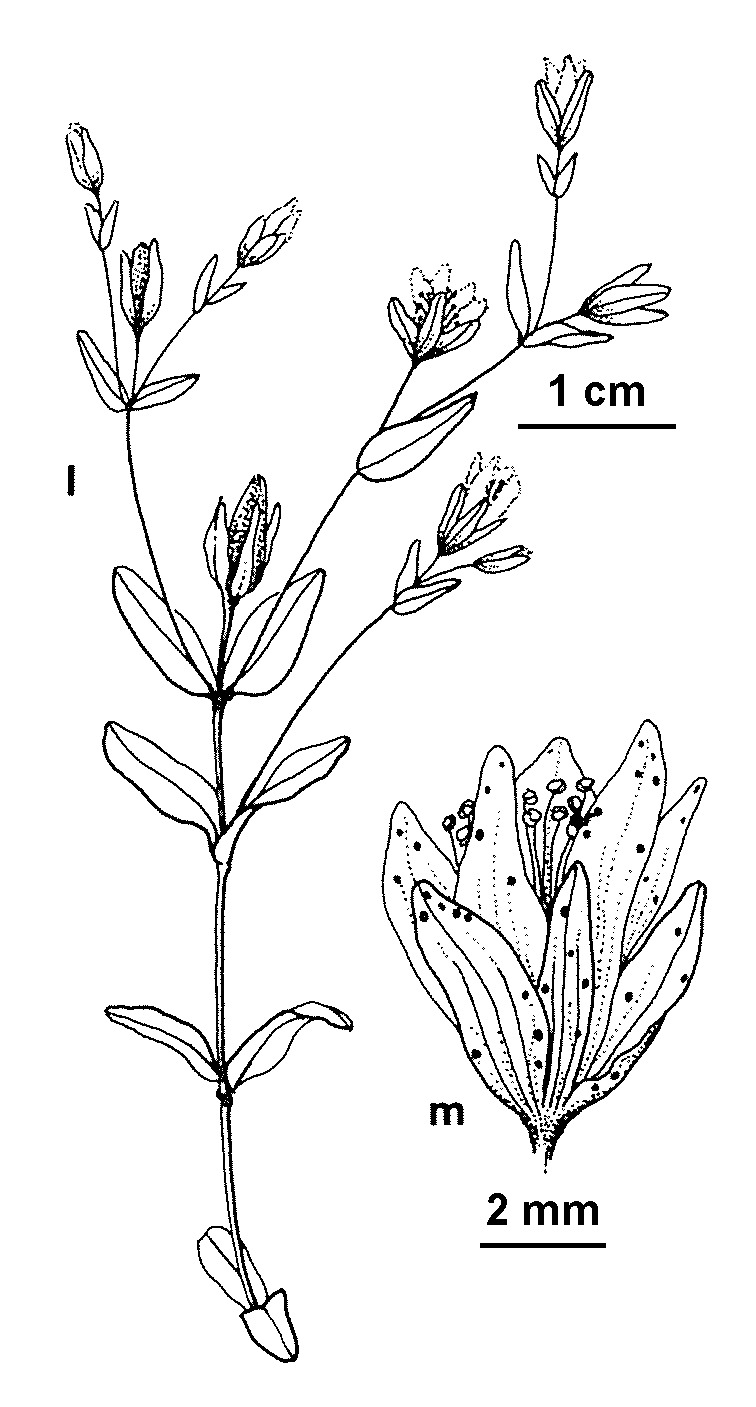Hypericum humifusum
L.Procumbent, loosely sprawling herb, to c. 10 cm high, often rooting from the lower nodes; stems weakly 2-ridged. Leaves elliptic, narrowly ovate or narrowly obovate, 3–15 mm long, 1.5–5 mm wide, margins distantly black-dotted. Flowers in small cymes or solitary and terminal; sepals ovate to lanceolate, 3–5 mm long, slightly unequal, black-dotted around the margin and/or over the back; petals up to twice as long as sepals, yellow, sparsely black-dotted toward the tip; stamens 10–30, c. half as long as petals, shortly fused into 3 bundles; styles 3. Capsule ovoid, equal to or slightly exceeding sepals; seeds short-cylindric, c. 0.5 mm long, trabeculate. Flowers Nov.–Jan.
VVP, GGr, HSF, HNF, Strz, MonT. Native to western and central Europe. Also naturalised Tas. An uncommon weed, widely scattered, with collections from Lake Condah, Creswick, Toolangi area, Morwell National Park and Delegate River near Bendock. Favouring disturbed, open sites near streams or near tracks or roadsides.
Confused with native Hypericum japonicum and H. gramineum but readily distinguished by the black-dotted leaves, sepals and petals.
Walsh, N.G. (1996). Clusiaceae. In: Walsh, N.G.; Entwisle, T.J., Flora of Victoria Vol. 3, Dicotyledons Winteraceae to Myrtaceae, pp. 316–321. Inkata Press, Melbourne.
 Spinning
Spinning

